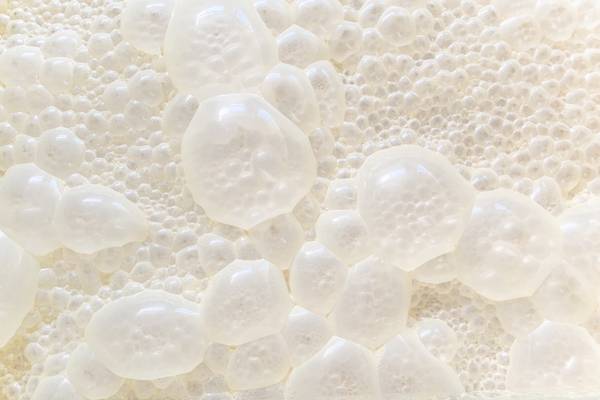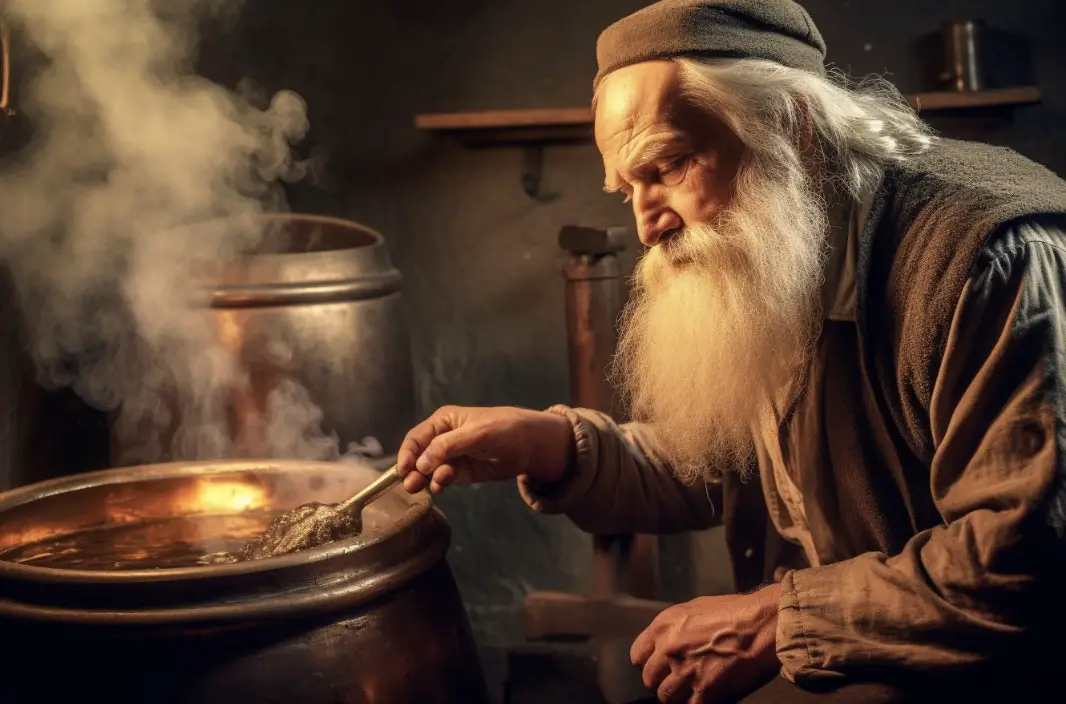What does fermentation smell like? Fermentation is the process by which yeast consumes sugar and produces alcohol and carbon dioxide, giving beer, wine, and other fermented beverages their characteristic flavors and carbonation.
The smell of fermentation is a complex mix of earthy, fruity, and sometimes funky aromas, which can vary depending on the type of yeast, the ingredients, and the fermentation conditions.
In this blog post, we will explore the different smells of fermentation, what they mean, and how they contribute to the final product’s flavor and aroma.
The Role of Yeast in Fermentation
Different Yeast Strains Produce Different Aromas
The type of yeast used in fermentation plays a significant role in the smell and flavor of the final product. There are many different strains of yeast, each with its own unique set of characteristics and flavor profiles. Ale yeast strains, for example, tend to produce more fruity and spicy esters, while lager yeast strains produce cleaner, more subtle flavors.
Some common yeast-derived aromas during fermentation include:
- Fruity esters, such as banana, apple, and pear
- Spicy phenols, like clove and pepper
- Alcohol and solvent-like aromas, particularly in high-alcohol brews
It’s important to note that not all yeast-derived aromas are desirable. Some strains produce off-flavors, such as sulfur compounds, which can create smells reminiscent of rotten eggs or cooked vegetables.

The Effects of Fermentation Temperature
Higher Temperatures Can Lead to More Aromatic Fermentations
The temperature at which fermentation occurs can have a significant impact on the smell and flavor of the final product. Higher fermentation temperatures can cause yeast to produce more esters and other aromatic compounds, leading to a more aromatic and flavorful beer.
Some possible effects of fermentation temperature include:
- Increased fruity ester production at higher temperatures
- Greater risk of off-flavors, such as fusel alcohols, at higher temperatures
- Cleaner, more subtle flavors at lower temperatures
Proper temperature control during fermentation is crucial for producing a balanced, flavorful, and aromatic final product, so pay close attention to your fermentation environment and yeast strain’s ideal temperature range.
The Ingredients and Their Impact on Fermentation Smells
In addition to yeast-derived aromas, the ingredients used in beer, wine, and other fermented beverages can also impact the smell of fermentation. Malted grains, for example, can contribute sweet, bready, and toasty aromas, while hops can add citrusy, floral, and piney notes.
Some examples of ingredient-derived aromas during fermentation include:
- Caramel and toffee notes from caramelized malts
- Citrus and tropical fruit aromas from hop varieties like Citra and Mosaic
- Earthy, herbal, and spicy notes from ingredients like spruce tips, juniper berries, or coriander
The combination of yeast, fermentation temperature, and ingredients creates a unique and complex aroma profile that can make each fermentation smell different.
| Aromatic group | Good smells | Bad smells |
| Esters | flowers and ripe fruits | Artificial, too sweet |
| Phenols | Vanilla, wood, sweet, smoke | Cheese, tar, plastics |
| Pyrazines | grass, chocolate, vegetables | Mushy, green pepper, mud |
| Terpenes | pine wood, spices, lavender | Gas, turpentine |
| Thiols | Dark chocolate, burned | Skunk, onion, smoke |
| Aldehydes | Nuts, fruits, grains, grass | Musty, burned, gas |
| Ketones | Flowers, fruits, cheese | Cheese, nail polish, Acetone |
| Amines | Nope. | urine, dead animals, fish |
| Carboxylic acids | wax, nutmeg, vinegar | Rancid, sweat, sour feet |
The Stages of Fermentation and Their Aromas
Fermentation is a dynamic process, and the smells produced during fermentation can change as the yeast consumes sugar and produces alcohol and other compounds. Here’s a breakdown of the different stages of fermentation and the typical smells associated with each:
1. Lag phase: This initial stage of fermentation is characterized by a relatively mild smell, as the yeast begins to consume oxygen and nutrients in preparation for the main fermentation phase.
2. Exponential phase: During this stage, fermentation is in full swing, and the yeast is rapidly consuming sugar and producing alcohol and carbon dioxide. The smell during this stage is often quite strong, with fruity esters, spicy phenols, and other yeast-derived aromas dominating the mix.
3. Stationary phase: As fermentation begins to slow down, the yeast starts to settle, and the smell becomes less intense. During this phase, malt and hop-derived aromas may become more prominent.
4. Decline phase: In the final stage of fermentation, the yeast has consumed most of the available sugar, and the smell of fermentation begins to fade.

By understanding the stages of fermentation and their associated smells, you can better predict how your final product will turn out and make adjustments as necessary.
Sourdough Fermentation Smells
The Unique Aroma of Wild Yeast and Bacteria
Sourdough bread is another popular fermented product that relies on a mix of wild yeast and lactic acid bacteria for fermentation. The combination of these microorganisms gives sourdough its characteristic tangy flavor and complex aroma.
Some common smells associated with sourdough fermentation include:
- Earthy, yeasty aromas from the wild yeast
- Sour, tangy notes from the lactic acid bacteria
- Sweet, bready smells from the fermented grains
Sourdough fermentation smells can vary widely depending on the specific mix of yeast and bacteria in your sourdough starter, as well as factors like temperature and fermentation time.
Off-Flavors and Their Causes
Identifying and Troubleshooting Unwanted Fermentation Smells
Not all fermentation smells are pleasant or desirable. Some off-flavors can develop during fermentation, which can be indicative of problems with the process or ingredients.
Some common off-flavors and their causes include:
- Sulfur/rotten egg smell: Often caused by stressed yeast or certain yeast strains, can sometimes be remedied by proper temperature control or yeast nutrient additions
- Buttery/diacetyl smell: Indicates incomplete fermentation or bacterial contamination, can sometimes be resolved by raising fermentation temperature or ensuring proper sanitation
- Vinegar/acetic acid smell: Caused by bacterial contamination or excessive oxygen exposure, requires proper sanitation and oxygen management to prevent
By learning to identify and troubleshoot off-flavors, you can improve the quality of your fermented products and ensure a more enjoyable final product.
Conclusion: The Complex World of Fermentation Smells
The smell of fermentation is a complex and fascinating topic that involves a wide range of factors, from yeast strain and fermentation temperature to the ingredients used and the specific stages of fermentation.
Understanding these factors and how they contribute to the smell and flavor of fermented products is an essential part of becoming a skilled and knowledgeable brewer, baker, or winemaker.
In summary, here are 10 key facts about fermentation smells:
1. Fermentation smells are a complex mix of earthy, fruity, and sometimes funky aromas
2. Different yeast strains produce different aromas during fermentation
3. Fermentation temperature can significantly impact the smell and flavor of the final product
4. Malt, hops, and other ingredients contribute to the smell of fermentation
5. The stages of fermentation produce different smells, with the exponential phase typically being the most aromatic
6. Sourdough fermentation relies on wild yeast and lactic acid bacteria, which create a unique aroma profile
7. Off-flavors can develop during fermentation, indicating issues with the process or ingredients
8. Proper temperature control, sanitation, and oxygen management are critical for preventing off-flavors and producing a high-quality final product
9. The smell of fermentation can provide valuable insight into the health and progress of the fermentation process
10. Understanding and appreciating the complex world of fermentation smells is an essential part of becoming a skilled brewer, baker, or winemaker.




